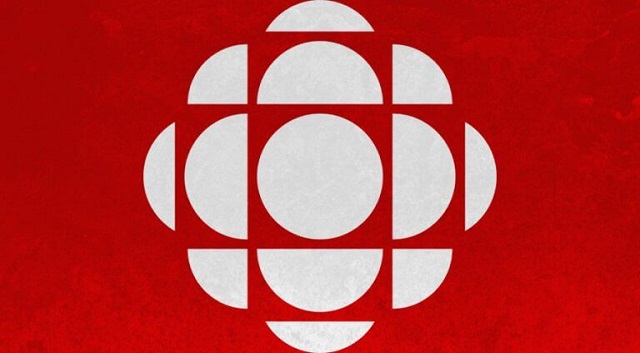News outlets abandoned balanced reporting on medical transitions for minors long ago
There is a major medical scandal unfolding in Canada, and our media is fueling it. In gender clinics across the country, doctors put healthy adolescents on invasive medical procedures that can impair fertility, sexual function, and bone density, damage bodily systems, and result in the removal of healthy organs. Teenage girls are being put into menopause, and young men are being chemically and surgically castrated. This is all done without a clear diagnosis or solid scientific evidence that these treatments are safe or beneficial.
Yet Canada’s mainstream media portrays these interventions, euphemistically called “gender-affirming care,” as evidence-based, medically necessary, and lifesaving. Top outlets such as CBC, CTV, and Global present paediatric gender medicine as uncontroversial.
Flawed Coverage Putting Canada’s Youth at Risk
The scandal of paediatric gender medicine contains all the elements of a sensational news story – conspiracy, intrigue, deception, and blackmail. It involves powerful institutions suppressing dissent, whistleblowers risking their careers to speak out, and innocent young people being harmed in the crossfire. There are medical professionals ignoring basic ethical principles, activists influencing policy under the guise of science, and victims being vilified and silenced. All this should prove irresistible to the inquisitive journalistic mind.
Which makes it all the more puzzling that, aside from the National Post, Canada’s mainstream media has opted to ignore the story and instead act as a mouthpiece for extremist trans activists, uncritically echoing their talking points. To understand how harmful and inaccurate the mainstream coverage of this issue is, it is essential to debunk the key claims of the trans activist lobby.
Let’s start with puberty blockers as a fully reversible pause. CBC first reported this claim in 2012, when the puberty suppression experiment was still in its infancy, then it pops up consistently throughout the intervening years, all the way up to the present day and the network’s dismal coverage of England’s Cass Report in 2024. CBC also feeds this misinformation directly to children in a CBC Kids article from 2023.
CTV, Global, the Globe and Mail, and others are equally guilty of spreading this inaccuracy to the public. It is understandable that many Canadians believe puberty blockers are a fully reversible pause and that therefore restricting access to these drugs is unnecessary government overreach. The trouble is the claim is false.
In truth, before Dutch researchers introduced puberty suppression for trans-identified adolescents, studies showed that 63 per cent to 98 per cent of youth eventually outgrew their gender distress. However, once puberty blockers were implemented, nearly all adolescents progressed to irreversible cross-sex hormones, with persistence rates of 98 per cent to 100 per cent. The explanation for this striking reversal of persistence rates is that the cognitive and sexual development that occurs during puberty naturally resolves gender dysphoria in most cases. Blocking puberty, therefore, means blocking the natural cure for gender-related distress.
Yet our mainstream media continues to call puberty blockers reversible because Canada’s “experts” in “gender-affirming care” continue to cling to this belief, despite the mounds of scientific evidence to the contrary. It is the same for the claim that affirming a young person’s transgender identity and providing access to puberty blockers, cross-sex hormones, and surgeries amounts to “life-saving care.” The most pernicious of all trans activist misinformation, the transition-or-suicide narrative is ubiquitous in Canada’s mainstream coverage of this controversial medical treatment.
There are many examples. The most reprehensible is in the CBC Kids piece, in which a young trans-identified person is quoted as saying, “If I wasn’t able to start this therapy, honestly, I probably wouldn’t be here anymore.” This content directly contradicts suicide prevention guidelines, which emphasize that the media must never oversimplify or attribute suicide to a single cause because suicide is known to be socially contagious.
The truth is the transition-or-suicide claim rests on exceptionally flimsy scientific evidence. Surveys of trans-identified youth do show increased risk of suicidal thoughts and suicide attempts, but completed suicide in this population is rare. The elevated risk is likely due to co-existing mental health issues that are extremely common in youth who identify as transgender. All systematic reviews to date have found no good quality evidence to support the transition-or-suicide narrative, and the Cass Report and a recent robust study out of Finland reached the same conclusion.
The final most common falsehood repeated by our top news outlets is that very few people regret undergoing these hormonal and surgical procedures. This appears regularly in articles on the subject. Once again, this falsehood appears in the same CBC Kids article, in which children are told that regret is experienced by only “around one per cent of all patients who received gender-affirming surgery, according to a review of 27 studies.” (Of note, the review cited by CBC is among the most poorly conducted study in a field already known for exceptionally low standards, leading one exasperated critic of the paper to ask, “where exactly is the line between incompetence and fraud?”)
These falsehoods remain ever-present in Canada’s reporting on paediatric gender medicine because our journalists have misplaced trust in medical associations, most notably the World Professional Association for Transgender Health (WPATH). WPATH, an activist group masquerading as a medical association, has been thoroughly discredited in recent years, but these revelations have failed to penetrate the Canadian media landscape.
Even more remarkably, it is not only the media who were duped by WPATH. Almost every major medical association in North America, including the Canadian Paediatric Society, follows the lead of this fraudulent activist group that sets standards of care based on flimsy science, buries evidence that does not align with its political goals, and believes “eunuch” is a valid gender identity even children can possess.
The WPATH Files, released in March 2024, revealed professionals within WPATH, including a prominent Canadian endocrinologist, are aware that children and adolescents are not capable of understanding the lifelong implications of puberty suppression, that there is significant regret among this cohort, and that gender-affirming clinicians are conducting an unregulated experiment on people who identify as transgender.
How Activists Shaped the Narrative
In October 2011, CBC’s The Passionate Eye aired a documentary titled Transgender Kids. The four children featured in the film were some of the earliest participants in the puberty suppression experiment and the filmmakers compassionately tackled some tough questions, such as how young is too young? And how should parents respond to their child’s desire for these extreme medical interventions?
This was the first time CBC had reported on “transgender children,” a brand-new type of human being only made possible by the puberty suppression experiment. What happened next very likely shaped the way the institution handled the issue going forward.
On January 27, 2012, Egale, which describes itself as a “2SLGBTQI+” charity, published an open letter accusing the CBC of “violence” towards “transgender children” due to repeated instances of misgendering in the documentary. According to Egale, “this significantly increases the likelihood that the viewing public will incorrectly view these children as victims of ‘gender confusion’ and their parents as horribly misguided.” The group demanded a public apology from CBC and recommended that the public broadcaster use the GLAAD media style guide going forward when reporting on trans issues.
Egale’s public response sent a clear warning to Canadian media: questioning whether children and adolescents could truly be transgender or make such life-altering decisions would not be tolerated. As a result, from the outset, activists tied the experiment to change the sex of children to a human rights cause, dictated the tone of media coverage, and effectively forbade genuine journalistic scrutiny of these invasive medical procedures.
The highly publicized suicide of trans-identified teen Leelah Alcorn in 2014 injected the “transition-or-suicide” myth into the Canadian mainstream narrative. Trans activists seized on Alcorn’s suicide note as supposed proof that affirmation and medical interventions saved lives, and from that moment on, our news outlets led parents to believe that questioning their child’s sudden transgender identity or desire for irreversible hormones and surgeries could have fatal consequences.
Having learned its lesson five years previously, in 2017, CBC pulled a second documentary called Transgender Kids: Who Knows Best before it aired after “over a dozen” complaints from Canadian trans activists. The activists claimed the documentary was “harmful, would “disseminate inaccurate information about trans youth and gender dysphoria,” and would “feed transphobia.”
In reality, the documentary was fair and measured. It contained all the standard trans activist talking points but also presented the opposing perspective. It featured Dr. Kenneth Zucker, who highlighted the historically high desistance rates before the introduction of puberty blockers and pointed out that many children experiencing gender distress would likely grow up to be gay.
This is what journalism is meant to do: present the full picture. But in a media landscape dominated by trans activists, news outlets abandoned balanced reporting.
A Lesson from the Past
In May 1941, the Saturday Evening Post published an article with the headline “Turning the Mind Inside Out.” In it, Waldemar Kaempffert, an editor of the New York Times, described a miraculous new brain surgery called a lobotomy that cut “worries, persecution complexes, suicidal intentions, obsessions, indecisiveness and nervous tensions” out of the mind. Kaempffert compared the procedure that involved blindly swinging knives inside a patient’s brain to the delicate work of a watchmaker.
Kaempffert’s article was just one of many glowing media endorsements of what would become one of medicine’s greatest atrocities. With each published piece, word spread, offering desperate families a false sense of hope. Encouraged by the promise of a “cure,” relatives sought lobotomies for their loved ones – including, most famously, the Kennedys, who, in the same year as Kaempffert’s article, subjected their daughter Rosemary to the procedure, with devastating consequences.
The misleading coverage of “gender-affirming care” has a similarly dangerous impact. First, each article reinforces the pseudoscientific notion that some children are transgender, embedding this idea into public consciousness and fueling the social contagion of adolescents adopting trans identities. Then, with every article that exaggerates the benefits of hormones and surgeries and downplays the harms, young people come to believe that this medical treatment is the solution to their pain. However, minors do not sign consent forms. That is the responsibility of parents.
Therefore, consider the real-world consequences of the falsehoods our journalists are propagating. Parents who rely on mainstream media may make disastrous decisions for their child based on ideologically driven narratives.
Glimmers of Courage
Amidst a sea of misinformation, there has been the occasional glimmer of courage. In 2021, CTV’s W5 produced a balanced segment showcasing the voices of detransitioners and asking whether there was adequate safeguarding in youth gender medicine.
In February 2024, Radio-Canada’s Enquête team produced a stunning piece of investigative journalism in which an actress posing as a trans-identified 14-year-old obtained a prescription for testosterone after just a nine-minute appointment at a private gender clinic in Quebec. In response, local trans activists smashed the windows of the Radio-Canada headquarters in Montreal. Then in April 2024, the Globe and Mail published a balanced and thoroughly researched opinion piece calling for a review of Canada’s approach to treating this vulnerable cohort.
CBC’s The National tackled the issue twice, approximately one year apart, and the second showed some measure of improvement in willingness to grapple with the complexity of the issue. However, this is nowhere near enough. These brief glimmers of hope are still drowned out in a sea of activist propaganda.
A Call to Action
One of the greatest challenges in exposing the scandal of paediatric gender medicine is that the truth is so shocking it defies belief. To the average person, it seems impossible that an entire medical field could be hijacked by an unscientific and irrational ideology – that endocrinologists could be chemically castrating healthy adolescents without solid scientific justification, that surgeons could be removing the healthy breasts of teenage girls without any proof of benefit, and that the World Professional Association for Transgender Health could have fraudulently duped the entire medical world into endorsing a reckless, ideology-driven experiment with no scientific underpinning. It sounds like a wild conspiracy theory. Yet every word is true.
Which means now more than ever, journalists must do their job – question, investigate, and expose the corruption of gender medicine. Skeptics need a platform, victims must be heard, and the harms must be scrutinized. Now is the time to plainly state that there is no evidence that “gender-affirming care” is lifesaving, puberty blockers are neither evidence-based nor reversible, and detransition rates are clearly rising. For over a decade, Canadian media have trusted activist-clinicians and the discredited WPATH while ignoring or vilifying those fighting to protect young people. This must end – immediately.
Mia Hughes specializes in pediatric gender medicine, psychiatric epidemics, social contagion and the intersection of trans rights and women’s rights. She is the author of “The WPATH Files” and a senior fellow at the Macdonald-Laurier Institute.

















